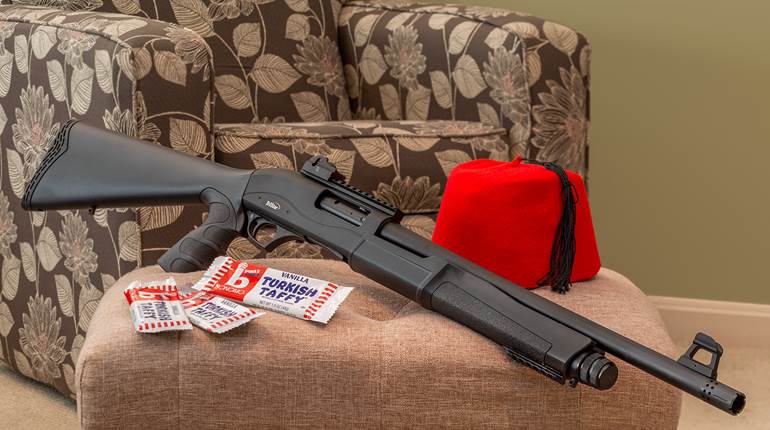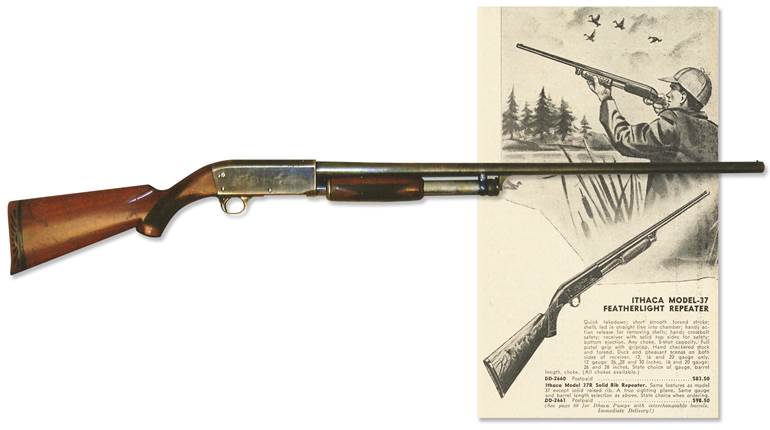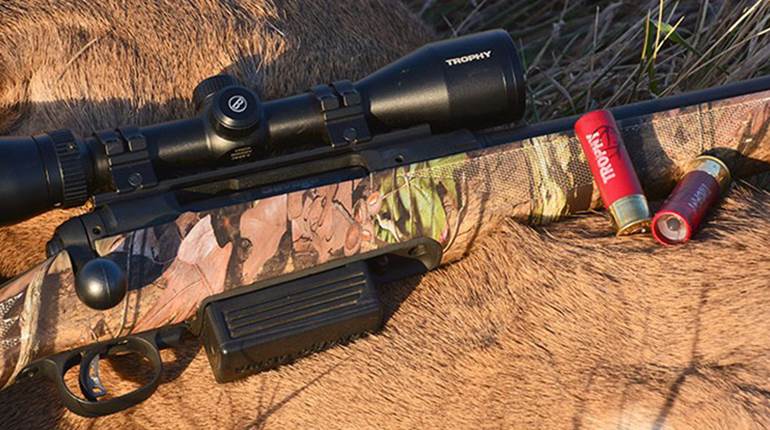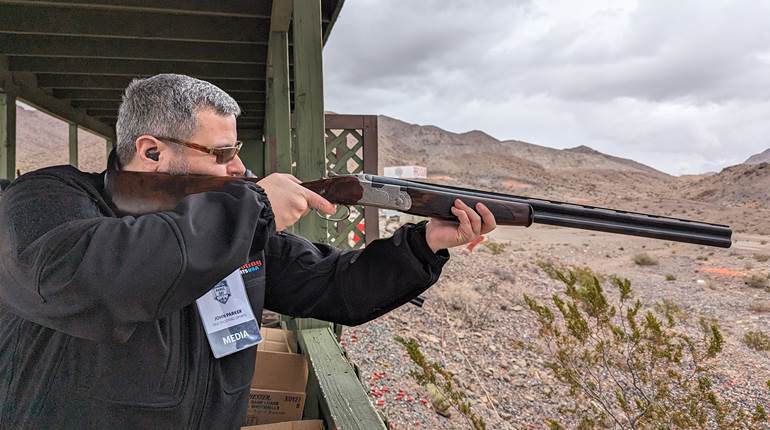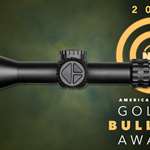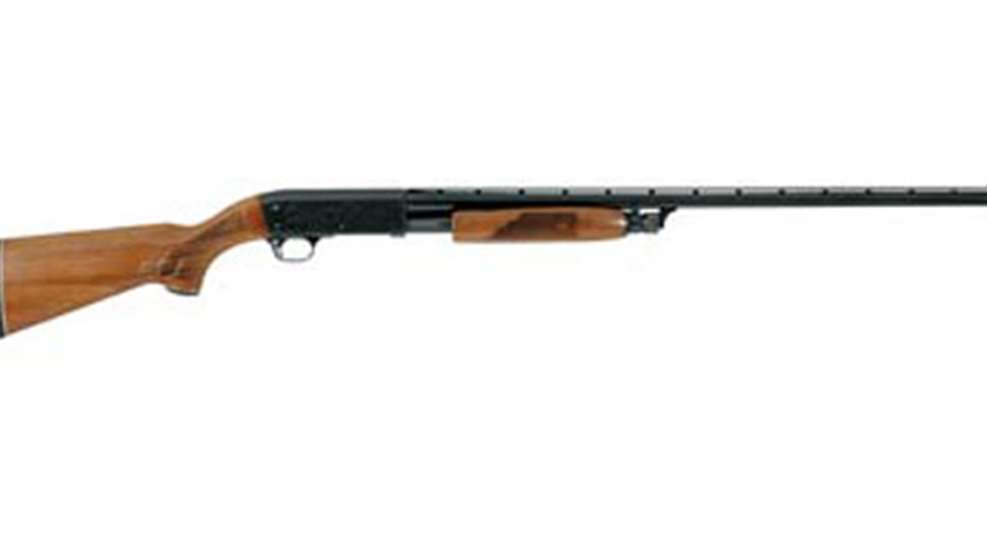
In a small wooden building on the banks of Fall Creek in 1883, Ithaca Gun Co. of Ithaca, N.Y., began a long history of firearm manufacturing. Ithaca saw many difficult times, with the 1960s, ’70s and ’80s being especially hard economically, resulting in several changes of ownership. Despite those difficulties, Ithaca Gun Co. was aggressively reorganized during the 1990s. Although the venerable company had built rifles, pistols, blackpowder guns and double-barrel, break-actions and autoloading shotguns over the years, the new company focused exclusively on the Model 37 pump-action shotgun.
First offered in 1937, the all-steel Featherlight is an improvement on the basic Remington Model 17 shotgun design. It won acclaim by virtue of being about a pound lighter than its nearest competitor. Rather than reducing weight through the use of alloys, the steel-receivered Model 37 employs a clever design that uses as few operating parts as possible. Also, these parts are lightened wherever possible.
Unlike most of its pump-action contemporaries, the Ithaca Model 37’s bolt locks into its stressed steel receiver. Rather than locking into a barrel extension as with other designs, the Model 37’s bolt locks by tipping up into a recess in the rear and locking directly into the receiver.
A notable design feature of the Model 37 is its bottom ejection port. This is helpful in keeping dirt and debris out of the action and has made the shotgun a favorite for many left-handed shooters. It also protects the shooter’s face in the event of a catastrophic case head failure by venting gases downward.
Model 37 Featherlight shotguns have been made in 20-, 16- and 12-ga. model variations including a 20-ga. Ultra Featherlight with an aluminum receiver, New Classic, Deluxe Vent Rib, English, Skeet, Trap, Sporting Clays, Turkeyslayer, Waterfowler and Youth models. Other model variations included the Deerslayer and Deerslayer II (the latter of which has a fixed/threaded barrel). Ithaca also produced shotguns for military use in the mid- to latter half of the 20th century. It built trench, riot and training Model 37s for the U.S. government. Also, riot models were available to civilians and police. Barrel lengths range from 20 inches for the riot gun, to 30 inches for the trap or duck guns.
Disassembly
Before attempting disassembly, unload the magazine and chamber. To empty the magazine, push in the spring shell stop (13) on the inside of the receiver. Ease the shells out one by one. Pull back on the slide release on the forward side of the trigger guard, and pull back the slide handle to empty the chamber.
To remove the barrel (1), pull back on the slide release and pull the slide handle assembly (12) to the rear to open the breech. Pull up the magazine nut pin (2) and use it as a lever to rotate the magazine nut (3) until the projection on it is free of the barrel lug. The magazine nut pin was furnished only on guns built prior to 1955. On later-built guns having no pin, simply rotate the magazine nut.
The barrel is joined to the receiver by an interrupted thread. When the magazine nut is free of the barrel lug, give the barrel a quarter turn to the left and pull it free of the receiver. The magazine tube and slide handle assembly will remain attached to the receiver.
The stock (53) must be removed before disassembling the action. First remove the buttplate screws and buttplate. The stock is attached to the receiver by a stock bolt (26) that has a square head with a slot so that it can be removed with a long screwdriver or socket wrench.
With the stock removed, turn out the trigger plate screw (17) and slide the trigger plate group to the rear and out of the receiver. Remove the carrier screw lock screws (56) and carrier screws (55) from the receiver.
Hold the receiver bottom up with the magazine to the left, and with a punch pull the slide pin (33) toward the body until the slide bar can be pulled forward from engagement with the slide (35). Pull the slide, breechblock (52) and carrier (42) together rearward out of the receiver.
The top extractor (47) is retained by a powerful spring. To remove it, use a thin punch to push the spring plunger back; at the same time push the extractor out of its seat. The bottom extractor (43) can be removed easily by driving out its hinge pin (48). To remove the firing pin from the breechblock, first drive out the check pin (49). Then the firing pin and spring (51 and 50) can be removed easily rearward. Reassembly is in the reverse order.












